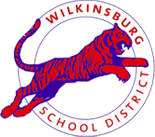1st Grade
|
1st Grade ELA |
|
|
Objective: |
Students will read and retell familiar stories. Read with reasonable fluency. Use letter-sound associations, word parts, and context to identify new words. Identify an increasing number of words by sight. Reading will activate and reinforce other skills (grammar, vocabulary, pronunciation, and writing). Math: Students will focus on four critical mathematical areas: (1) developing understanding of addition, subtraction, and strategies for addition and subtraction within 20; (2) developing understanding of whole number relationships and place value, including grouping in tens and ones; (3) developing understanding of linear measurement and measuring lengths as iterating length units; and (4) reasoning about attributes of, and composing and decomposing geometric shapes. Science: Through hands on investigations and observations students will learn about sound and light, as well as their five senses while implementing first grade Foss kits. Throughout the year seasonal science topics will be supplemented to include life cycles of plants and insects, weather, solar system, and animal adaptations/hibernation. Social Studies: Students will develop chart and graph skills, citizenship skills, critical thinking skills, map and globe skills, and nonfiction/informational reading skills through Social Studies topics, such as rules and laws, where people live, our country, our changing world, and people and the marketplace. |
|
During the School Year Students Will Learn: |
|
|
1. |
ELA: English Language Arts - Beginning of the year Level C - Beginning of the year:
Consistently monitoring reading and cross‐checking one source of information against another; self‐correcting |
|
2. |
ELA: English Language Arts - Middle of the year Level F:
Read without pointing and with appropriate rate, phrasing, intonation, and stress |
|
What Students Will Learn by the End of the Year |
|
ELA: English Language Arts - End of the year Level I:
|
|
3. |
Science:
Communicate procedures and explanations giving priority to evidence and understanding that scientists make their results public, describe their investigations so they can be reproduced, and review and ask questions about the work of other scientists. |
|
4. |
Social Studies:
Students will develop critical reading skills such as: cause and effect, categorize and classify, main idea and details, sequence, compare and contrast, recall and retell, vocabulary, use visuals and preview and question. |
|
5. |
Math:
Students will write numbers up to 120. Students will count to 120. |


